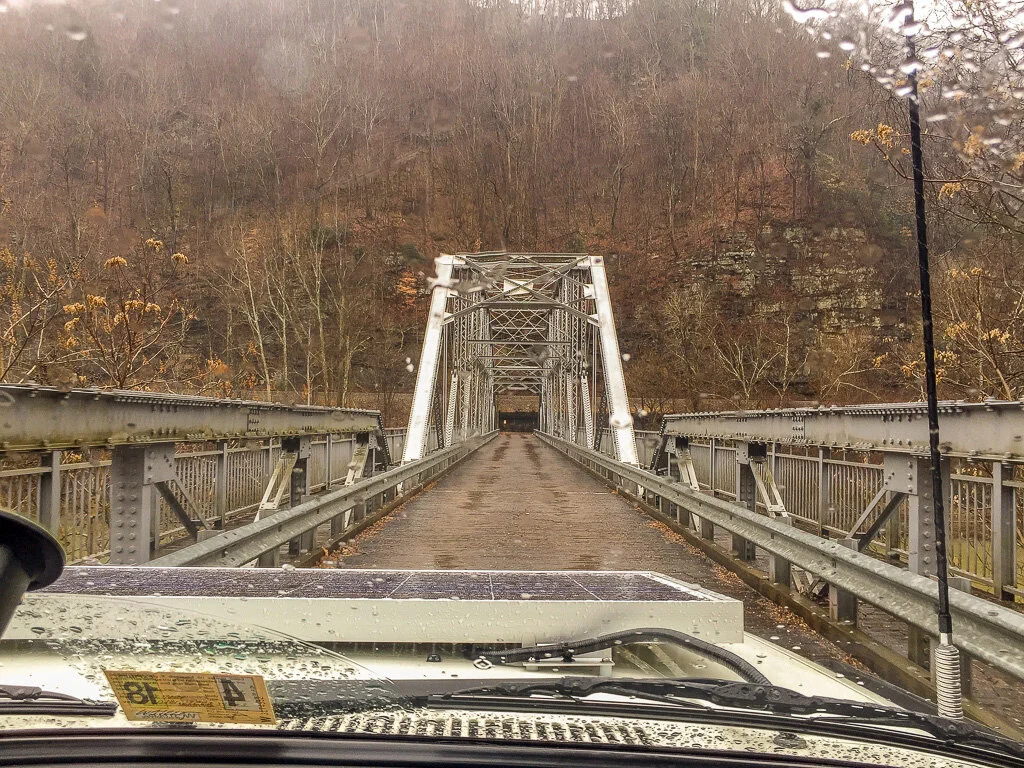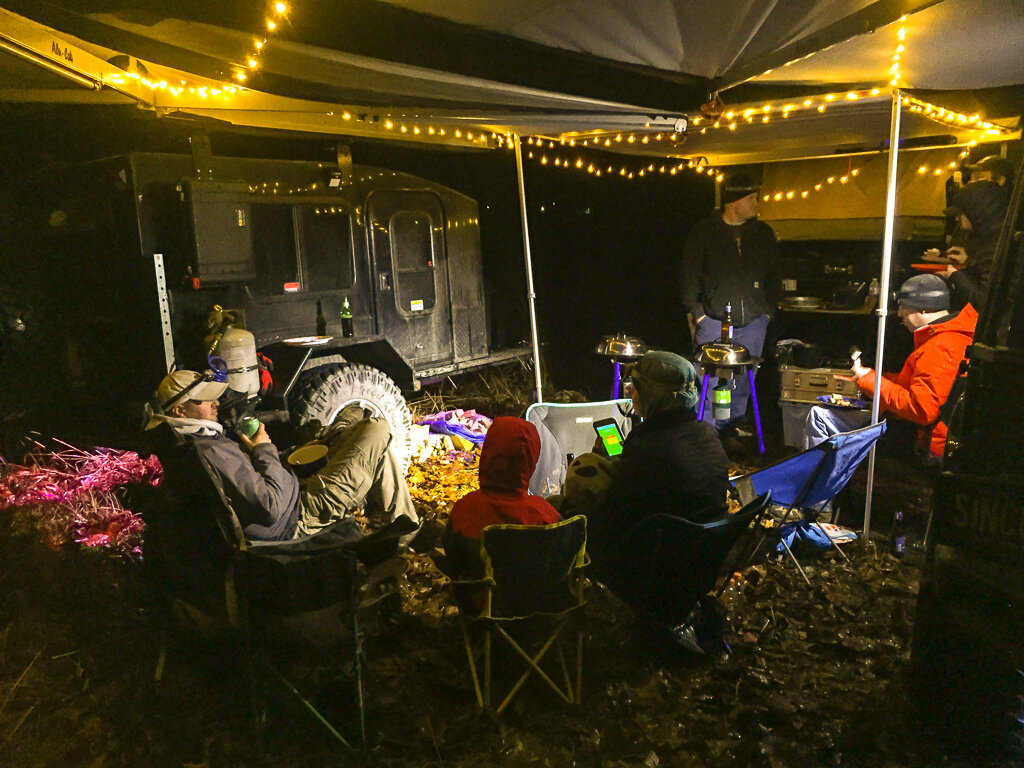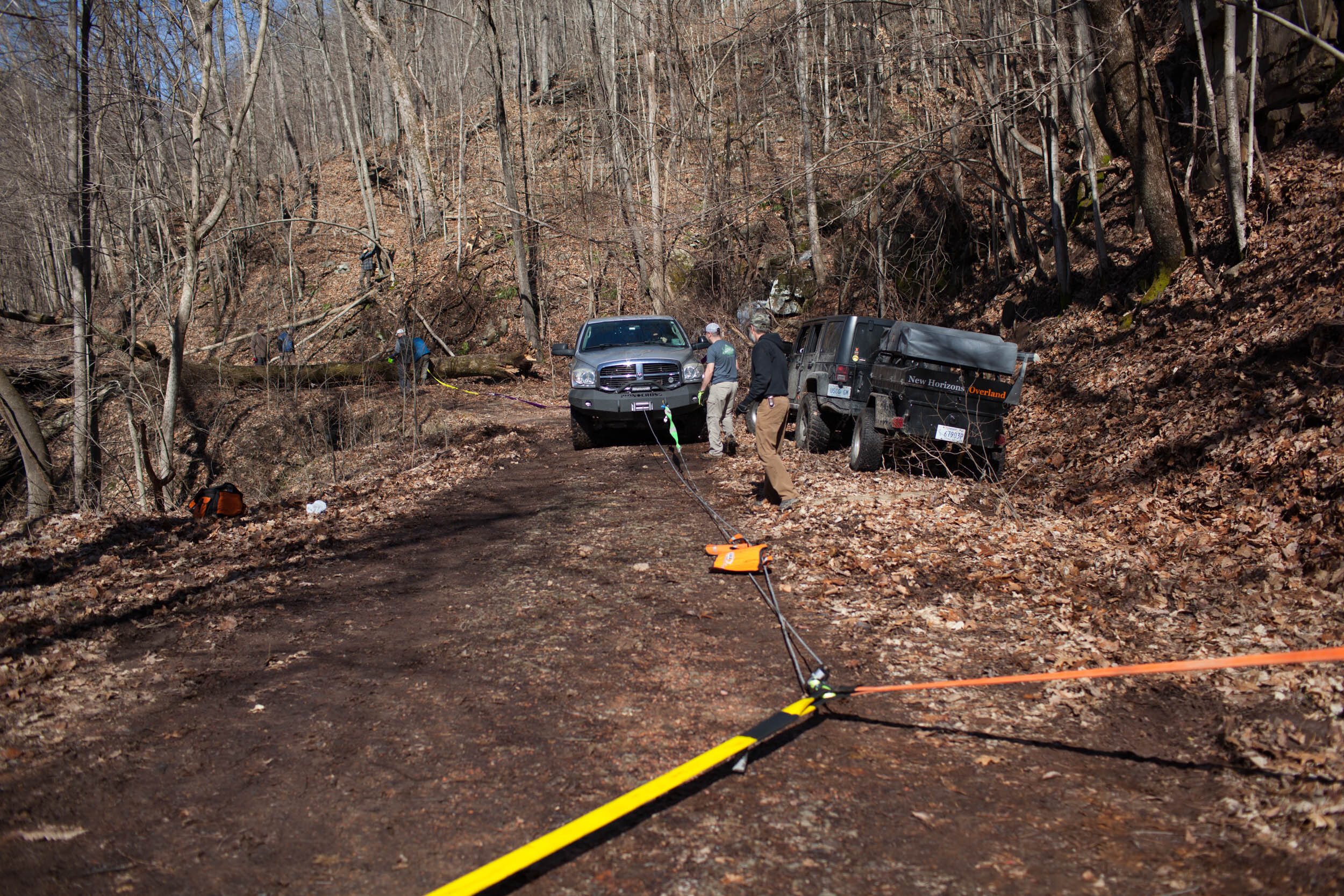We made our way across the West Virginia border and a new level of excitement was building. Our journey from the coast of Virginia had given us plenty of time to wonder about the things we were about to discover.
The New River Gorge has long been on our list of places to visit. It’s a place well known for it’s scenic views, powerful waters and epic white water rafting. It’s also a playground for adrenaline junkies. But this trip wasn’t about barreling down some river in a quest to get our adrenaline fix. This was a sight seeing trip, an Overland adventure. Typically when it comes to Overlanding, we like to point our vehicle in a general direction and see what comes of it. However, for this particular trip, we were not traveling alone. Fellow Overlander’s from Florida, Maryland and Virginia had joined us and instead of aimlessly wandering around, hoping to find something interesting, we had done a little pre-planning. This trip we chose to zero in on a few key locations, the Canyon Rim Visitor Center, the New River Gorge Bridge, Nuttalburg, Prince Army Camp, Thurmond and the Glade Creek Gristmill. An ambitious list for sure, considering we only had 2 days in which to pull it off.
Arriving at our first destination, we made our way into the Canyon Rim Visitor Center and through the historical exhibit in the New River Gorge museum. After looking through the exhibits and talking to the Park Rangers, we made our way outside and in to the rain where we explored the hiking trails and the many scenic overlooks that peered into the gorge. With all of the exercise we were getting, we were quickly reminded that we hadn’t eaten yet and decided a little lunch was in order. Ok, little was an understatement as there was sixteen of us in total. As we made our lunch, the kids banded together for a game of Simon Says under the shelter and tried their best to avoid the torrential downpour outside. Once lunch was finished, we packed everything away and made our way out into the rain and back onto adventure. There was a light fog in the air and the torrential rain was making for some amazing waterfalls on the walls of the gorge. As we continued our way down into the gorge, we couldn’t help but pausing every so often to take in the views. Making our way to the one lane bridge below and across to the other side, we took a short break in a parking lot adjacent to Fayette Station Rapids and marveled at the immense power of the river. Nature’s power was in full force and it was a force to be reckoned with.
Soaked from the torrential downpours, we began to work our way out of the gorge and back north across the New River Gorge Bridge. It holds the record for the longest steel span in the western hemisphere and was built as recently as 1977. It’s also the third highest bridge in the United States and is truly a modern engineering marvel. Seeing pictures of it doesn’t do it justice, trust me.
On the other side of the bridge, we turned east toward our next destination. Nuttallburg is considered to be one of the most complete abandoned coal mines in West Virginia. Founded in 1870 and named after its owner John Nuttall, it was the second mine, of fifty, in the state to ship smokeless coal. Furthermore, it became known on a national level when automobile industrialist Henry Ford leased the mines in an attempt to gain control of every facet and resource needed to produce his automobiles. His plan ultimately failed and the mines production eventually ceased in 1958. In 1998, the Nuttall family transferred ownership to the National Park Service and in 2011 the grounds were improved, making it easier and safer for travelers to explore this historic mining town. As we made our way through the grounds, we were amazed by how much of it was still intact. From the Head house and conveyor to the coke ovens, the Park Service has done an amazing job of preserving the history and depicting what life was like at the mine.
With Nuttalburg in our rear view mirrors, we slowly made our way up and out of the gorge. The torrential rain had switched over to snow as we gained elevation and we quickly found ourselves driving through a winter wonderland. Our friends from Florida had never had the chance to experience actual snowfall, let alone any wintery conditions, and were beside them selves with excitement. At our next fuel stop, we all couldn’t help but indulge in some form of winter hi jinx and antics. Back on the road we made our way south to Prince, Wv. Prince is a small community nestled on the banks of the New River. But more importantly, Prince is also the location of an old Army encampment that was used to teach soldiers bridging techniques. The Army camp was last used as a military installation in 1957 and the foundations of the original eleven buildings can still be found on the property. Today the Army camp is a free campground run by the National Park Service. It boasts eleven pull in camping pads, a boat launch and a very nice restroom facility. There is no running water or showers, so you’ll have to come prepared. Pulling into camp, we quickly picked our sites, setup camp and began cooking dinner. We had the place completely to ourselves and the only sound that could be heard was the rain and the roaring river. Eventually the rain stopped and we all gathered around the fire to warm ourselves before calling it a night.
The next morning we woke to warmer temps and sunshine. After an enjoyable breakfast, we broke camp and started to make our way toward Thurmond and the Glad Creek Gristmill. Since the weather had cleared up, we decided to take a more scenic route and headed north on a gravel road just outside of town. As we made our way up the mountain, we found the road conditions deteriorated rapidly. Several sections were washed out creating some precarious off camber situations and we dealt with mud holes and downed trees around every bend. We were in a good rhythm and we were really starting to enjoy the road, when a quarter of the way through our route, on a narrow section of trail, we found ourselves trapped. Directly in front of us was a tree measuring approximately three feet in diameter and laying across the road. The root bulb still high on the embankment and the limbs hanging a good thirty feet over the shear edge told us this was going to be a fight. With our trusty 80 Series in the lead, we pulled cable and began winching the tree. Once down from the embankment, the Cruiser and winch quickly ran out of steam. The tree was a lot larger than anticipated and it was going to require something with a little more muscle. Clearing the rigs to one side, we managed to get the biggest vehicle we had to the front. Hooking up to the Dodge 2500, we were all but certain this would get the job done. But after multiple attempts of pulling, winching and winching while pulling we were quickly proven wrong. The tree was far too heavy to just be muscled to the side. So out came the electric chainsaw, as it was the only one we had, and the group went to work. As the sawing began, I ran ahead to scout the road and not more than a mile up I discovered the road was impassable for many in our group. By the time I rejoined the group, they had just successfully cut through the tree and their spirits were high. I felt a sense of remorse that I had to break the bad news to them. After a quick meeting, we decided to finish clearing the tree and turn around on the wider road just beyond it. Hooking the Dodge up for the final pull, we all cheered in victory as we watched the tree move. We had spent close to 4hrs clearing trail and fighting this behemoth and not a one of us was sour about it. Did we kill off any chance of making it to the Gristmill later that day? Sure, but we’ll go another day. Today we learned a lot about ourselves and one another and we’ll take that any day.
Back on the highway and racing the sun, we made our way to our last stop. Thurmond, Wv was a booming rail yard and community in the late 1800’s to early 1900’s. At one point, the town produced more freight revenue than the larger cities of the east and midwest and it’s Banks were the richest in West Virginia. During it’s peak, Thurmond would see fifteen trains a day and served over ninety-five-thousand passengers a year. The Amtrak Cardinal still continues to serve the town as a “flag” stop and is the second least used stop in the country. Walking through the town, we marveled at it’s picturesque surroundings. The downtown buildings still standing, tower above the active rail lines and placards with photos do their best to show what type of business would’ve been carried out inside the now empty shells. Across the tracks, the turntable, engine house and freight depot have long been gone and all that remains is a barren lot. But despite all of the changes, the National Park Service and the five remaining residents of Thurmond, yes I said five, are still making efforts to share and preserve the history of this once prominent town. Several out buildings and a small museum are on display to help tell the tale of what was once the most bustling town in the state. With the sun hanging low in the sky, we made our exit from Thurmond and the New River. Never had we expected to discover so many amazing places in one area. We didn’t make it to all of our destinations, but we’ll rest assured that every trip back is sure to be as amazing as the first.





















